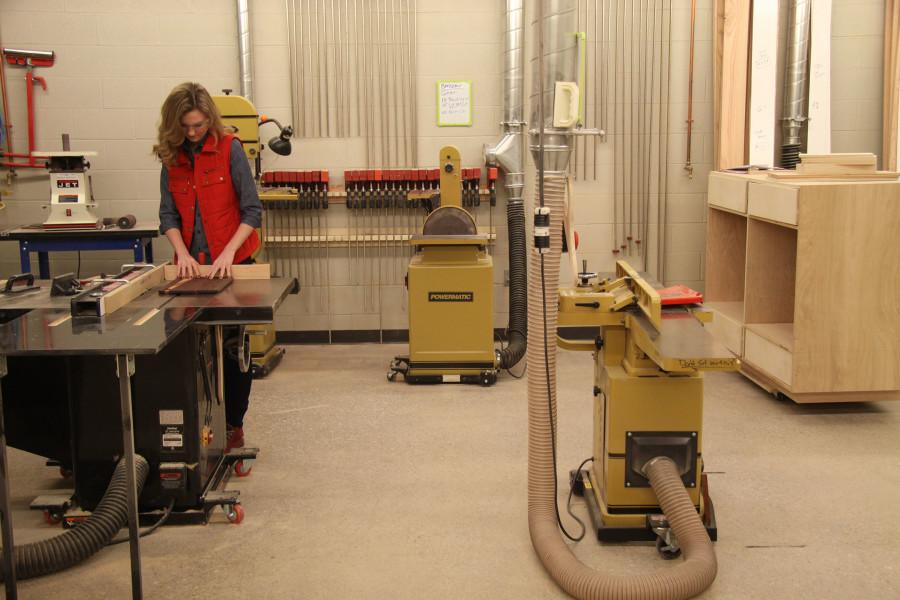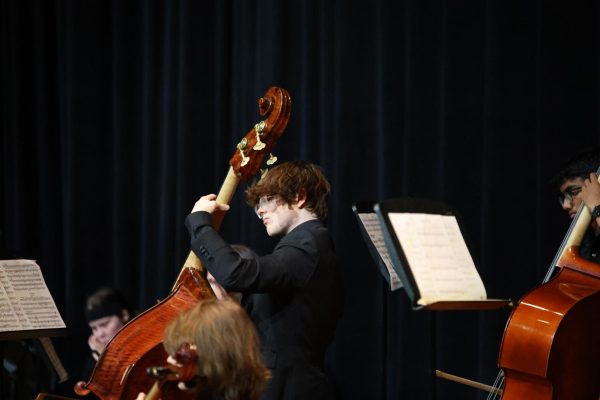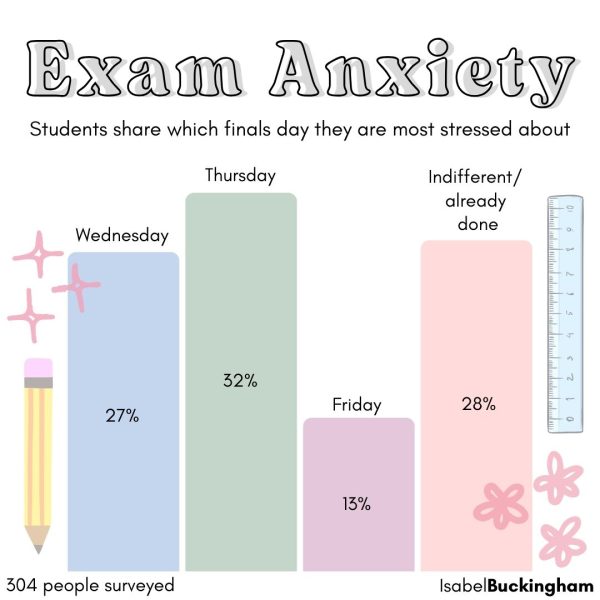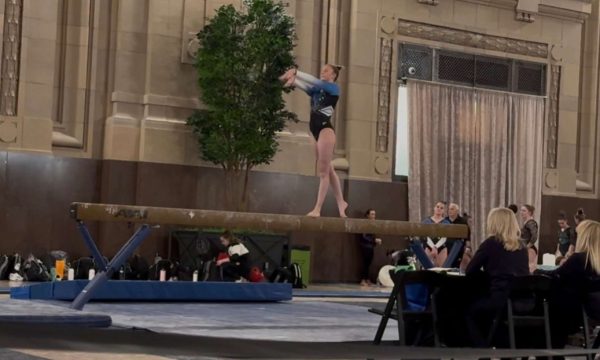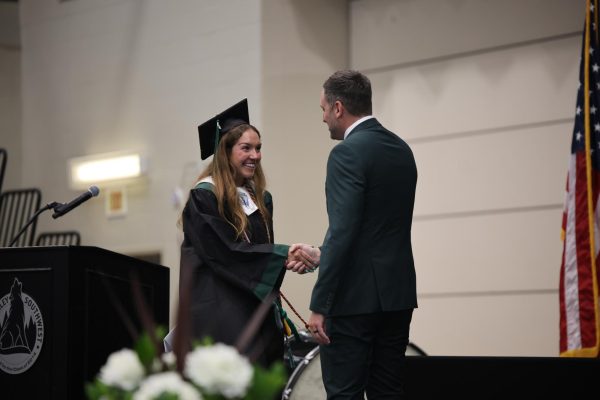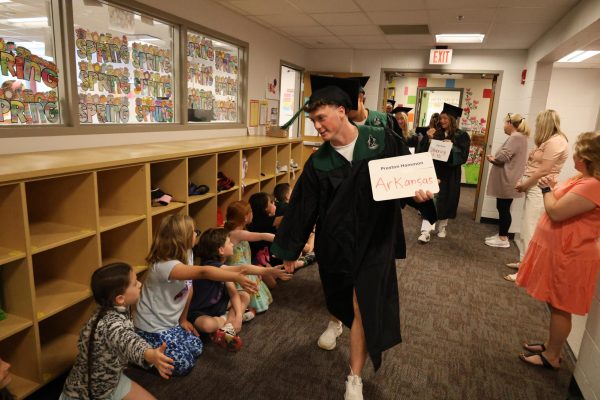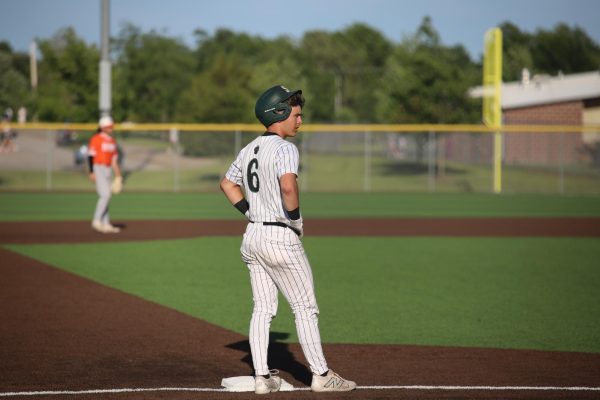Women enter into the engineering field
Junior Leah Joseph uses the table saw in her woodshop class.
After being carefully designed, measured, cut, fastened and sanded, the project is complete. What once was merely an idea and a few pieces of wood is now a cutting board. The designer picks up her creation and gently brushes the remaining specks of dust off.
Enrollment in engineering classes shows a large gap between genders. According to the National Science Foundation (NSF), only one percent of girls take engineering courses in high school, compared to six percent of boys. The same trend can be seen at Southwest. Industrial Technology instructor Cody Parks said out of approximately 22 students, there have never been more than three girls in each class.
One possible explanation for the large gender gap is that engineering is still being viewed as primarily a male field, similar to the medical field in the past.
“I think that maybe some people just have a hard time getting past the stereotype, because the STEM (Science, Technology, Engineering, Mathematics) majors weren’t [traditionally] supposed to be for women, but that is going to change here pretty quickly because there are a lot of women going into medicine and engineering,” senior Jamie Rickert said.
Rickert has taken three engineering classes, as well as a civil engineering and architecture course at CAPS.
Similarly, junior Leah Joseph, who has taken an engineering class and a woodshop class, also thinks stereotypes that are rooted in the past may be one of the causes of the gender gap.
“Girls will look at [engineering] and think, ‘Oh, that’s a guy job— I shouldn’t be doing that,’” Joseph said. “At the same time, I think a lot of people will like it. When I talk to some of my friends about what I do in my classes, they are like, ‘Oh yeah, that sounds like fun.’ But I think they think of it as not a girl job — they don’t want to be the only girl in the class.”
Parks also sees the hesitation girls have in taking the class if they are unsure who is going to be in it. Often there are groups of friends who will take the class together, but some people will end up being by themselves.
“I have a dream to get a girls woodshop class, only because they would be more likely to take it and be less intimidated because what intimidates people is feeling like you are going to be the only person there who doesn’t know something,” Parks said. “If you feel like everybody else knows what is going on and you won’t, you will not want to be a part of that activity. If we did a girls-only engineering class, I would have 22 girls in there.”
Although two of the girls have been the only females in their classes before, they said they didn’t feel excluded or looked down upon. They also said taking the engineering classes helped them make new friends.
“I know it is kind of scary because it is almost all guys, but it is not that bad because there is going to be one or two girls with you,” Joseph said. “I have made a lot of friends through it, and it seems scary, but it is not. It is a lot of fun.”
Another reason for the gender gap could be because male and female brains have different understandings, and certain abilities come more easily to one than the other.
“A lot of people think it is a scary field, but I think it’s because I have found more of my female friends are wired to understand the arts,” senior Madeline Fines said.
Fines has been in two engineering classes at the school and has taken both physics and AP physics, which she said resembled the engineering classes that she enjoyed. Fines also said that unlike her female friends, math and science appealed more to her than the arts.
“I like doing math problems and actually solving things and coming up with a tangible answer rather than english where you analyze a book,” Fines said. “I like the real tangible results a lot better, and it makes sense to me because it is very logical. As long as you do everything right, you will get a solution that works.”
Because people think in different ways, the engineering field often seeks unique perspectives. The girls said they were never overlooked in class and often were the ones others would ask for help with projects. They assumed this was because they understood and could explain topics differently.
Also, Parks said when engineering companies are putting together teams, the best-working team will have people with many different understandings and points of view.
“I know when I have girls in class, they have great attention to detail, they follow instructions very well, they are very task-based and are great at multitasking,” Parks said. “They have certain skill sets that make them very successful. All of the drafting one, two and three girls and even IED (Introduction to Engineering Design) girls have always been the most successful in my classes because there are so many rules and constraints to take into account when you design.”
Female brains tend to process 10 times more white matter, as compared to males’ seven times more grey matter, according to www.psycologytoday.com This means the information and action-processing areas are more active in the male brain. The female brain, however, is better at multitasking.
“Women have the creative mind,” Rickert said. “People think ‘guys are into that programming stuff,’ but it’s so much more than that. It’s about how you can make things work and how you can problem solve.”
Parks dosen’t just teach mechanical skills in his engineering classes. He aims to teach higher-level problem solving skills. Parks modifies class projects year-to-year so students have to think critically about the solution and can’t just recycle old models from previous activities.
“Even if you don’t want to end up doing [engineering] as a career, it is really useful in daily life just to have that problem solving,” Fines said. “It is definitely an experience to go in and work with different groups of people, and it gives you different skills, not just from the math side, but the determination to take things from an idea to building it and presenting it.”
Taking engineering classes empowers people to do things for themselves. Or as Parks said, “Why would you want to rely on somebody else to fix your things and solve your own problems?”
The gender gap seen in the engineering classes roll over into the workforce. Although women make up 47 percent of the workers, only one in 10 are in STEM fields. The women who are in these classes at school are filling in the gap.
All three students plan to major in an engineering field. Fines has enrolled in the Applied Physics/Engineering Program at the University of Kansas and plans to specialize in chemical systems. Her final goal is doing consulting work for large companies.
Joseph wants to be an industrial designer so she can “mesh” her “artistic ability and creative mind.”
Rickert plans to get an engineering degree in college and work with water treatment and conservation, a job field she discovered while touring facilities with her CAPS class.
“If you think about it is a logical sense, X amount of people are currently enrolling in college and being engineers, and that is not the amount to fill the need,” Parks said. “What we have to do is pull from another population. If all we are getting is males, the next logical population is females, and the next logical question is ‘why aren’t they in there to begin with? What have we done as a society or as a group to deter young women from feeling like this is a job for them?’ We are trying to change the numbers.”
Perspective: Kathryn Young
When Senior Process Engineer Kathryn Young went into college, one of the last things she imagined becoming was a chemical engineer.
She attended University of Missouri-Columbia’s pre-med program and was on track to getting a degree in biochemistry. However, she came across a problem.
“After my first semester in college, I had met all of the requirements for math and I didn’t have to take any more math classes — that was my favorite course,” Young said. “I thought, ‘Hmm, I don’t know if this is really the right major for me, because I really like math and am not ready to be done with math.’”
Her boyfriend, who was majoring in engineering, suggested for her to try engineering as well. Young decided on chemical engineering because it was closely related to the chemistry she had enjoyed in her previous major. Without this conflict, she would not have even considered engineering.
“I have always been what someone would call a girly-girl,” Young said. “I have always liked clothes and makeup and shopping and art. I had never thought about building things or creating things, so I don’t know if it was a society-type thing … Growing up, I didn’t know about engineering — I didn’t even know it existed. Maybe there was a lack of education when I was younger with introducing students to possible career opportunities.”
To “keep engineering girly,” Young had planned to use her degree to develop makeup, yet life had another unexpected turn for her. She was hired at Black & Veatch, an engineering design and construction firm in Kansas City, as a process engineer.
“I would consider [my job] still to be more of a masculine-type job, but now I have learned it doesn’t really matter,” Young said. “I am still producing something really important: energy — which now, as I have learned … is much more important for the world to have than for the world to have makeup.”
Now Young has worked at Black & Veatch for 11 years, designing chemical processing plants. This includes liquefied natural gas production and filtering sulfur out of exhaust produced by factories.
Similar to her graduate class with only one other woman, Young began her job as a minority. However, at Black & Veatch, the company hiring trend is evening out between the genders.
“It was kind of an interesting thing that over the next 11 years, we hired a lot of females,” Young said. “It is probably [now] close to 50-50 females and males, which I think is very unique … I don’t know [exactly why], but I like it.”
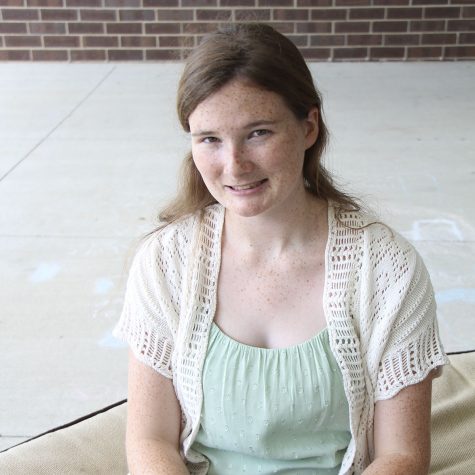
Lillie Hoffart is a senior and has been on staff since her freshman year. She enjoys writing and designing for the paper and is the managing editor....


